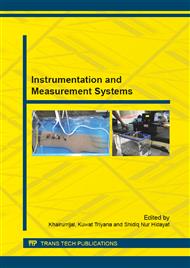[1]
D.B. Go, R.A. Maturana, T.S. Fisher, S.V. Garimella, Enhancement of external forced convection by ionic wind, International Journal of Heat and Mass Transfer 51(2008) 6047–6053.
DOI: 10.1016/j.ijheatmasstransfer.2008.05.012
Google Scholar
[2]
S. Chakraborty, I-C. Liao, A. Adler, K.W. Leong, Electrohydrodynamics: A facile technique to fabricate drug delivery systems, Advanced Drug Delivery Reviews 61 (2009) 1043–1054.
DOI: 10.1016/j.addr.2009.07.013
Google Scholar
[3]
M. Rada, A. Shooshtari, M.M. Ohadi, Experimental and numeral simulation of meso-pumping of liquid nitrogen —Application to cryogenic spot cooling of sensors and detectors, Sensors Sensors and Actuators A 148 (2008) 271-279.
DOI: 10.1016/j.sna.2008.08.008
Google Scholar
[4]
V. Singhal, S.V. Garimella, Induction electrohydrodynamics micropump for high heat flux cooling, Sensors and Actuators A 134 (2007) 650–659.
DOI: 10.1016/j.sna.2006.05.007
Google Scholar
[5]
R-T. Huang, W-J. Sheu, C-C. Wang, Heat transfer enhancement by needle-Arrayed electrodes – An EHD integrated, cooling system, Energy Conversion and Management 50 (2009) 1789–1796.
DOI: 10.1016/j.enconman.2009.03.017
Google Scholar
[6]
H. Kawamoto, S. Umezu, Electrostatic micro-ozone fan that utilizes ionic wind induced in pin-to-plate corona discharge system, Journal of Electrostatics 66 (2008) 445–454.
DOI: 10.1016/j.elstat.2008.04.009
Google Scholar
[7]
I.J.G. Timothy, W.G. Peter, M.G. Sylvia, The efficiency of corona wind drying and its application to the food industry, Journal of Food Engineering 80 (2007) 1233–1238.
DOI: 10.1016/j.jfoodeng.2006.09.016
Google Scholar
[8]
F.C. Lai, A prototype of EHD-enhanced drying system, Journal of Electrostatics 68 (2010) 101-104.
DOI: 10.1016/j.elstat.2009.08.002
Google Scholar
[9]
M. Rickard, D. Dunn-Rankin, Numerical simulation of a tubular ion-driven wind generator, Journal of Electrostatics 65 (2007) 646–654.
DOI: 10.1016/j.elstat.2007.04.003
Google Scholar
[10]
H. Tsubonea, J. Ueno, K. Komeili, S. Minami, G.D. Harvel, K. Hrashima, C.Y. Ching, J.S. Changa, Flow characteristics of dc wire-non-parallel plate electrohydrodynamic gas pumps, Journal of Electrostatics 66 (2008) 115–121.
DOI: 10.1016/j.elstat.2007.09.002
Google Scholar
[11]
E. Moreau, G. Touchard, Enhancing the mechanical efficiency of electric wind in corona discharges, Journal of Electrostatics 66 (2008) 39–44.
DOI: 10.1016/j.elstat.2007.08.006
Google Scholar
[12]
J. Zhang, F.C. Lai, Effect of emitting electrode number on the performance of EHD gas pump in a rectangular channel, Journal of Electrostatics 69 (2011) 486-493.
DOI: 10.1016/j.elstat.2011.06.007
Google Scholar
[13]
C. Kim, D. Park, K.C. Noh, J. Hwang, Velocity and energy conversion efficiency characteristics of ionic wind generator in a multistage configuration, Journal of Electrostatics 68 (2010) 36–41.
DOI: 10.1016/j.elstat.2009.09.001
Google Scholar
[14]
M. Rickarda, D. Dunn-Rankina, F. Weinbergb, F. Carleton, Maximizing ion-driven gas flows, Journal of Electrostatics 64 (2006) 368–376.
DOI: 10.1016/j.elstat.2005.09.005
Google Scholar
[15]
M. Rickard, D. Dunn-Rankin, Numerical simulation of a tubular ion-driven wind generator, Journal of Electrostatics 65 (2007) 646–654.
DOI: 10.1016/j.elstat.2007.04.003
Google Scholar
[16]
J.D. Moon and D.H. Hwang, An EHD Gas Pump Utilizing a Ring/Needle Electrode, IEEE Transactions on Dielectrics and Electrical Insulation 16 (2009) 352-358.
DOI: 10.1109/tdei.2009.4815163
Google Scholar


